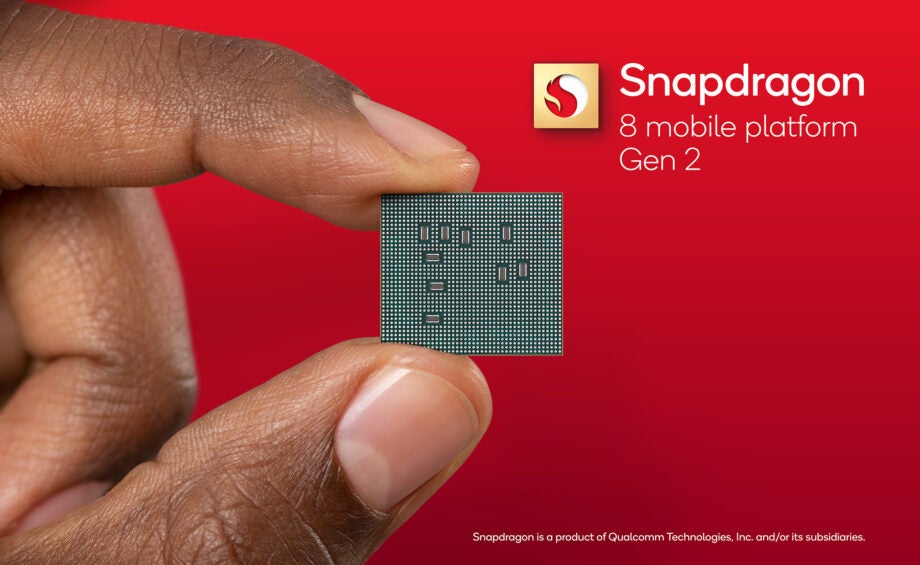What is iSIM: Snapdragon 8 Gen 2 integrated SIM tech explained

What is iSIM: SIM cards are on the endangered species list, and eSIMs could be too with Qualcomm’s new integrated SIM technology.
To coincide with MWC 2023, Qualcomm has announced that its current flagship SoC, the Snapdragon 8 Gen 2, has an iSIM (Integrated SIM) built-in.
That means the SIM technology is built directly into main the chip that powers the phone, somewhat negating the need for the standalone electronic (eSIM) chip and the physical SIM card slot.
It all means phones may ship with the iSIM technology enabled by the end of the year, potentially opening up more space within the phone for larger batteries or other components.
The tech has been in the works for at least half a decade, but is now coming to the fore. Here’s more on Qualcomm’s adoption of iSIM tech, which could hasten the departure of your trusty SIM card.

Save £20 on the AirPods Pro 2
Amazon has cut the price of the AirPods Pro 2 further, cutting £20 from the RRP.
- Amazon
- Save £20
- Now £229.99
What is iSIM?
iSIM stands for Integrated Subscriber Identity Module. The announcement today focuses on an innovation from Qualcomm and Thales – a company makes eSIM tech.
The idea is to have the technology that handles the connection to a network that identifies the subscriber and their access terms within the devices main processor – in this case the Snapdragon 8 Gen 2 Mobile Platform.
It’s much the same as an eSIM in functionality but without having to take up additional space within the phone.
iSIM benefits
The iSIM technology can eliminate the need to have a physical SIM card slot in the phone, which some manufacturers (like Apple’s iPhone 14 in the US) are already eschewing. Not only that, you won’t need a physical eSIM chip to replace the SIM card itself.
The current Nano SIM card in most phones for example is 12.3mm x 8.8mm. Phones with eSIM require, at best, a 2.6mm x 2.4mm chip to be soldered to the board.
The space taken up by an iSIM is less than one square millimetre. Thales, the main pioneer of the tech, says it’ll also bring power consumption benefits:
– It saves space by eliminating the need for a separate component, allowing for the secure connection of smaller devices.
– It requires significantly less power than eSIMs, making, for example, massive IoT use cases more operational.
Thales
Like eSIMs, there’s also improved security because a physical SIM can be removed and lost or broken and also the the retention of the eSIMs ability to sign up for a carrier (or multiple carriers). The iSIM offers that unlimited flexibility to switch between carriers as and when is needed, which is great for travellers.
Which phones will have an iSIM
So far, there are none. The Samsung Galaxy S23 arrived running a modified version of Qualcomm Snapdragon 8 Gen 2 SoC, but iSIM is not enabled on those handsets.
That’s a little surprising considering the proof of concept we covered a year ago was based on a Samsung Galaxy Z Flip 3. It may be because the special version of the Snapdragon 8 Gen 2 for Galaxy doesn’t contain the tech, but we can certainly expect Samsung phones to be on board at some point.
There’s no word from Qualcomm and Thales on which phones will be the first to use iSIM, but this is definitely one to look out for on spec sheets as the year goes on.
Qualcomm reckons by 2027 there’ll be over 300 million iSIMs shipping within phones by 2027 and that’s probably going to mean the tech will have to trickle down to most Snapdragon chips as standard, especially if its intended to be used in lower cost phones.
“The new iSIM can now offer device makers further opportunities to save space and reduce build and supply chain costs while maintaining best-in-class security level,” Qualcomm says.





